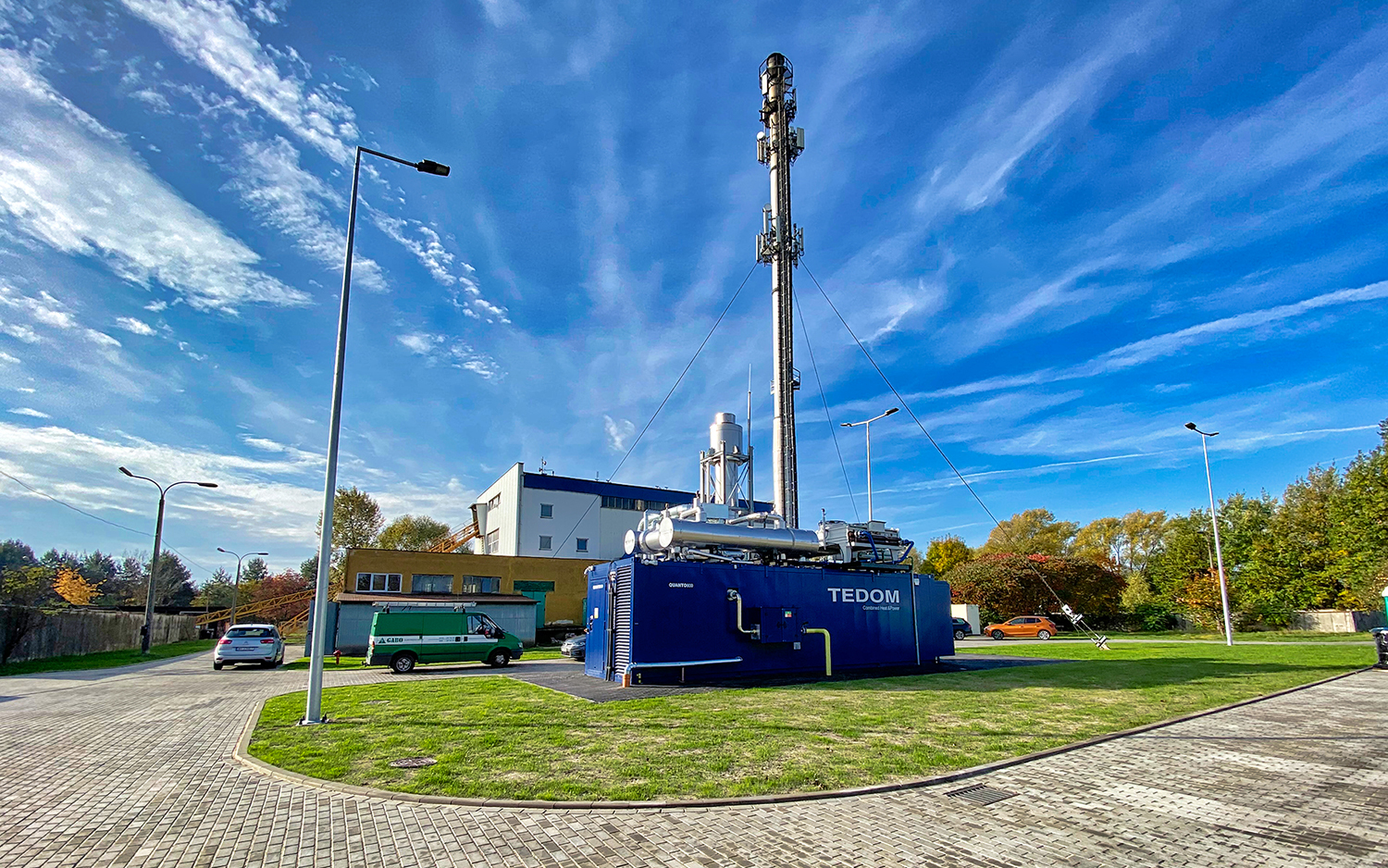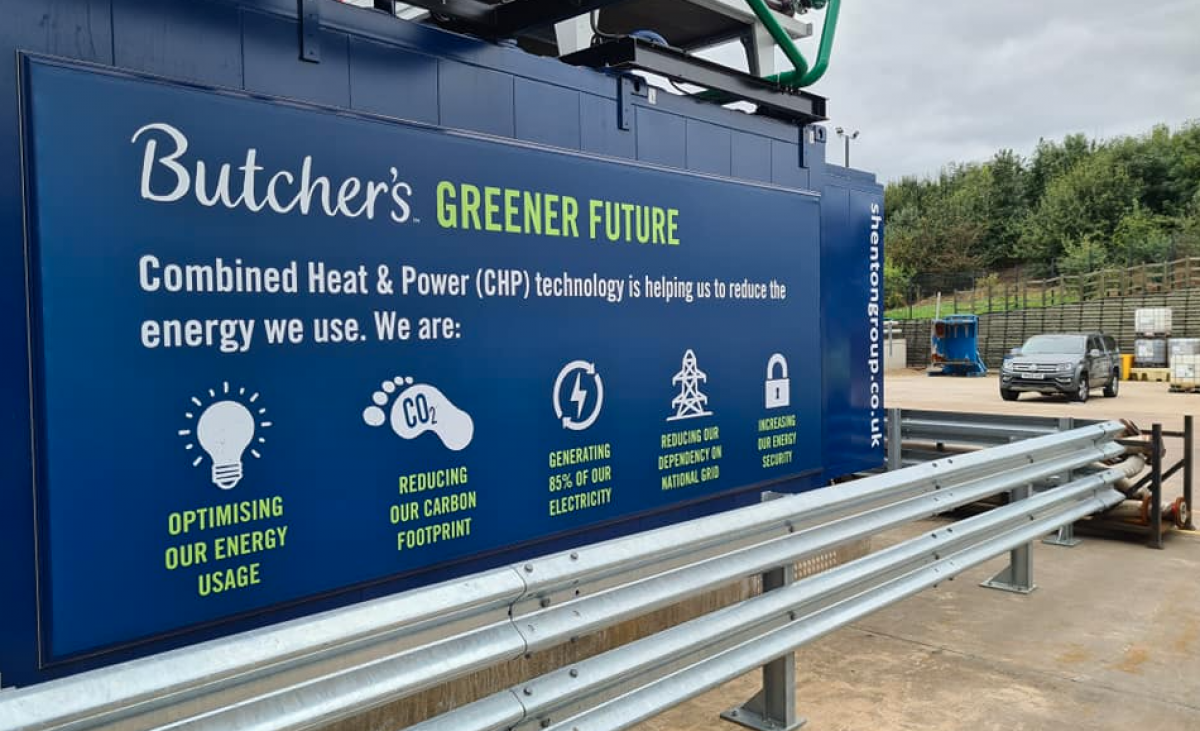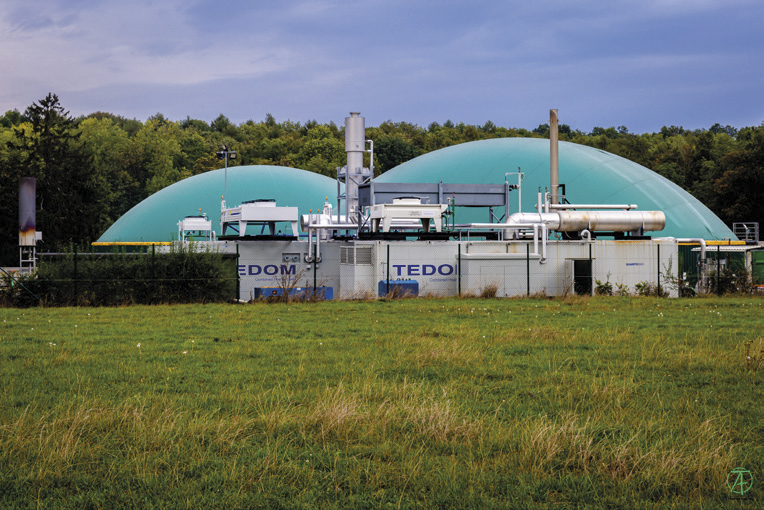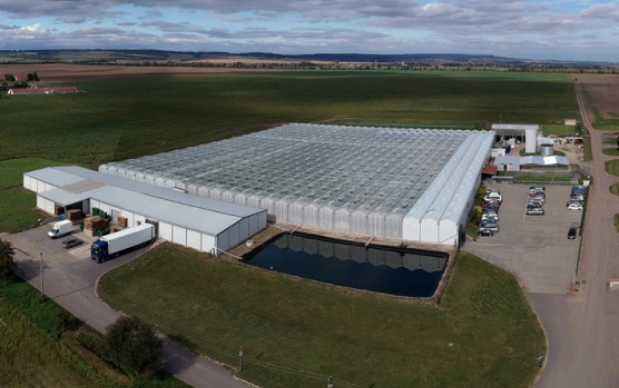
Biogas Plant in Suchohrdly with TEDOM CHP Units - Case Study
In Suchohrdly near Miroslav in the Czech Republic, an interesting agricultural project was created in 2007 by Renergie s.r.o., which managed to combine livestock and crop production with a biogas plant and cogeneration technology. Over the years, this project has gradually expanded to include other energy sources. Currently, the local agricultural company founded by Ing. Karel Kuthan is comprised of a total of 7 TEDOM CHP units, which supply the farm buildings, greenhouse and biogas plant with cheap electricity and on-site heat.
The resulting complex of downstream technologies, processes and buildings is largely independent of electric power supplied by the public grid. In fact, if necessary, the plant can also operate in “island mode.” The project is also interesting from the standpoint that TEDOM is the technology supplier, as several generations of CHP units from the Cento model range have been in operation and still are to this day.
We have installed gradually a total of 7 machines below in Suchohrdly:
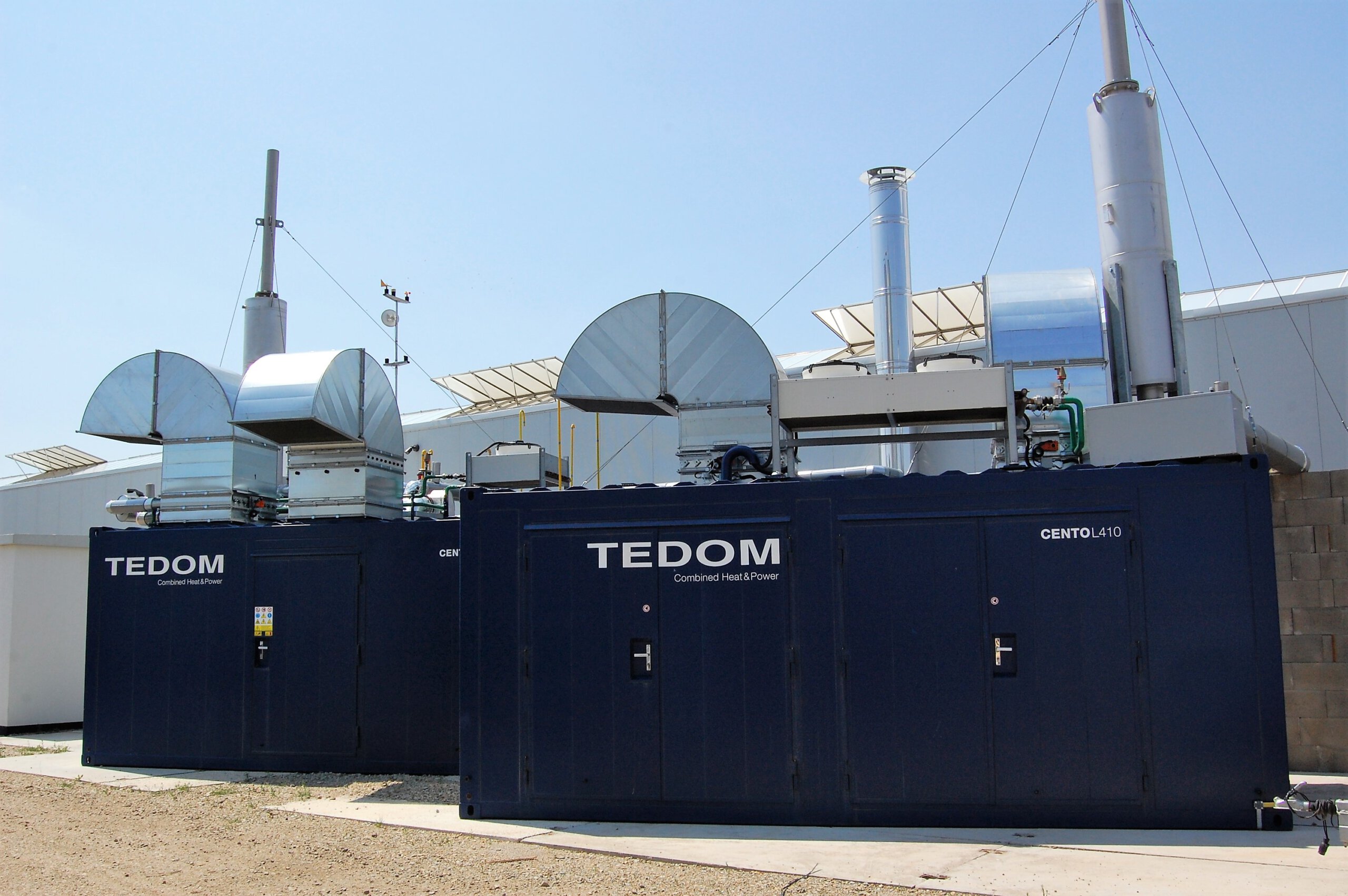
2007: 2x Cento 160 on biogas with TEDOM engines, 2x 160 kWe
2008: 1x Cento 180 on biogas with TEDOM engines, 175 kWe
2013: 1x Cento 180 on biogas with TEDOM engines, 180 kWe
2018: 1x Cento 400 on natural gas with MAN engine, 400 kWe
1x Cento 200 on natural gas with TEDOM engine, 200 kWe
2022: 1x Cento 530 on biogas with MAN engine, 528 kWe
We provide full service support for all the CHP units throughout their operation.
Unique Project
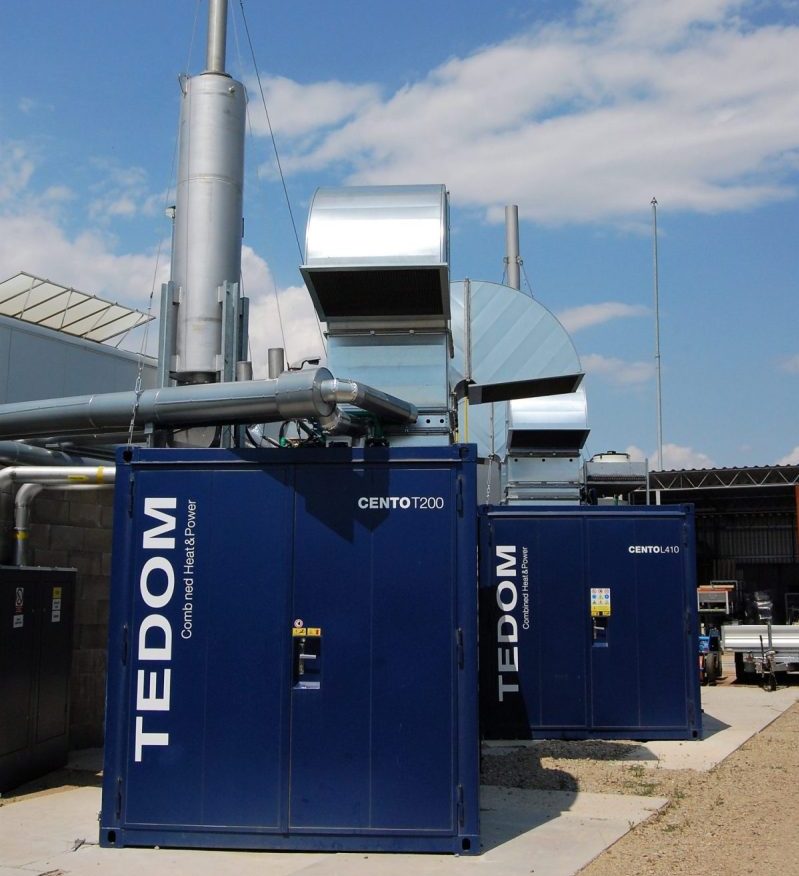
The project is unique in that it combines the biogas plant‘s energy production and consumption in one location, along with the associated closed material flows. The input substrate of the biogas plant is a liquid slurry sourced from pig farming. It is further supplemented by a purpose-grown biomass as well as waste from sugar mill cuttings. The operator then uses the digestate produced in the biogas plant on his land throughout the year. The digestate is a 90 % replacement for industrial fertilizers for crop production compared to being without the biogas plant. If the pig liquid slurry is simply dumped on the field, the energy contained in it is lost – it is possible to obtain approximately 30 m³ of biogas from one ton of liquid slurry. Approximately 60 kWh of the electric power can be generated from this biogas.
Due to the installation of the natural gas CHP units, the energy supply is very smooth. Thanks to this combination of multiple units, it’s possible to carry out service interventions and regular maintenance on each of the biogas CHP units individually without a loss in the required power. The system is all backed up by natural gas, if necessary.
The biogas plant forms a single unit not only with the farm buildings, but also with a large greenhouse that has a production area of over 10,000 m² , which was built in 2010. The owner of the greenhouse is the Bylinky s.r.o. company. This greenhouse is also supplied with heat and electric power from cogeneration. In this case, the heat produced from cogeneration replaces approximately 250,000 m³ of natural gas that would otherwise be required annually to heat the greenhouse.
Any surplus electric power produced is eventually supplied back to the grid by the operator.
TEDOM Engine
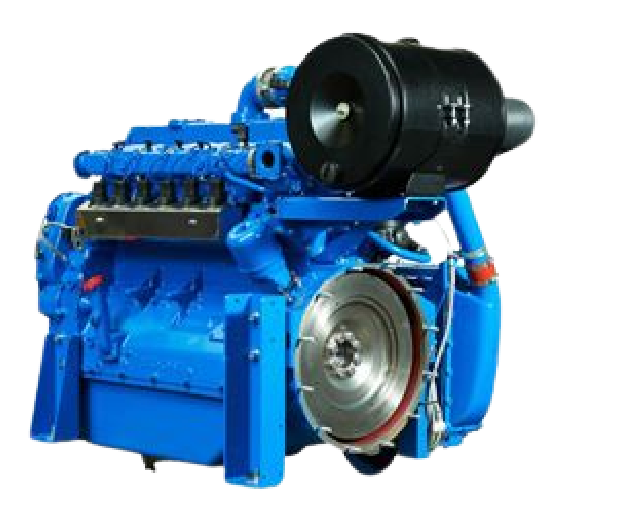
The production of the TEDOM engine continues the successful tradition of the LIAZ engines. TEDOM has been cooperating with the Jablonec engine works plant since their foundation and has contributed significantly to the modification of the engine for its use in cogeneration. In 2003, TEDOM became the owner of the engine plant and since then the engine-related development activities have increasingly accelerated. From the original max. 140 kW of its electrical output, the engine has gradually been enhanced to output up to 200 kW, while maintaining its core advantages:
- A robust design guaranteeing a long service life.
- Cheap spare parts compared to other engines.
- Ability to also burn inferior fuels.
The current TEDOM engine meets strict emission limits. Because of its characteristics, it is also popular abroad and the Cento series CHP units are therefore often exported, even to overseas countries
In the last 10 years alone, nearly 1,000 TEDOM engines have been deployed in our own CHP units, of which one-third of the engines run on biogas or other alternative fuels.

“What made me want to build a biogas plant? The consideration of gaining synergistic benefits from the combination of livestock and crop production together with energy production derived from the biogas plant. The production of electric power at a guaranteed price means certainty of a consistent income; the processing of liquid manure in the biogas plant means recovery and conversion of its energy into a high-quality fertilizer in the form of digestate. The heat from the biogas plant ensures the well-being of animals in our stables and steady and constant conditions in the greenhouse.”
Ing. Karel Kuthan, executive head and founder of the company
More case studies
Selected references and case studies






